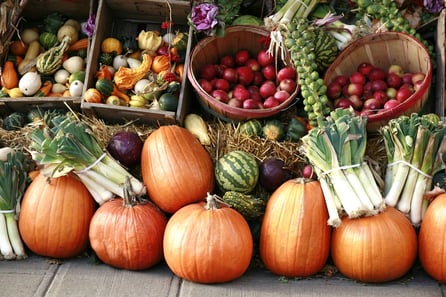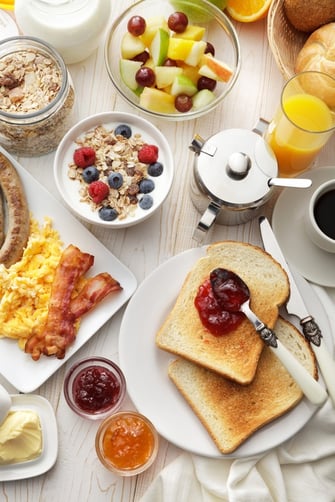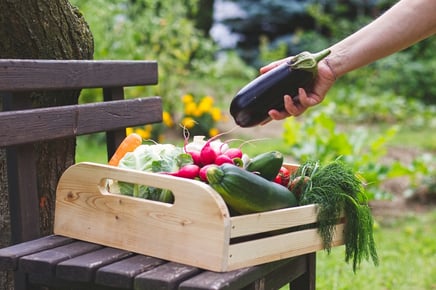 Getting healthy and losing weight go hand in hand. If your goal is to get healthy and lose weight, I need you to RELAX! No, really! Relaxing is good for you, and managing stress effectively doesn’t only help with weight loss; it makes us healthier overall. So sit back, relax, and read on for more tips.
Getting healthy and losing weight go hand in hand. If your goal is to get healthy and lose weight, I need you to RELAX! No, really! Relaxing is good for you, and managing stress effectively doesn’t only help with weight loss; it makes us healthier overall. So sit back, relax, and read on for more tips.
How Cortisol Plays a Role
Cortisol is a hormone that your body releases when it is stressed. If you only have small amounts of cortisol, there is no problem. But when stress is constant, as it can be in many of our lives, the amount of cortisol in your bloodstream rises and stays elevated. This all leads to weight gain. Relaxation can help prevent overproduction of cortisol.
When cortisol is released, those cravings for potato chips, candy bars, pastries, and so on are what provide a quick energy boost. As if those choices aren’t bad enough, cortisol goes on to store those extra calories as fat, mainly around your abdominal area. There is also the interference with hormones that control your appetite. You will start to find that you are hungry more often and have a hard time staying satiated.
And if that doesn’t make you want to stop stressing, cortisol can also cause decreased muscle mass because it lowers testosterone levels. The lower your muscle mass, the less fat you will burn when working out.
Ways to Relax
Here are five tips for relaxing.
- Meditate. This is an excellent method for cleansing your mind of all the negative and stressful thoughts. Refresh and think positively. Whenever you feel heavy or burdened, or even when you feel tired of doing work, take a deep breath and allow your body to relax. Really focus on your breathing by using a 5 count: Breath in for a count of 5. Hold your breath for a count of 5. Release that breath for a 5 count. Try this a few times a day.
- Avoid distractions. To fully relax your lifestyle and live a stress-free life, limit all distractions, such as television, cell phones, or laptops.
- Become more active. Exercise alone can be the best stress reliever. Try grabbing a friend for a walk/jog outside in the fresh air. Take a new group fitness class like the various types of yoga classes NIFS offers. Join a small group where you can laugh, work, and have fun with goal-oriented individuals, or have a Health Fitness Instructor design a program dedicated to your needs. The possibilities are endless.
- Eat healthy. Like regular exercise, eating a healthy, balanced diet can make a significant contribution to a less-stressful lifestyle. By making healthy eating choices, you can make yourself both physically and emotionally stronger. Eat vegetables, drink plenty of water, and control your portions. Not sure about where to start with your nutrition? Meet with one of our Registered Dietitians to get you going on the right path. If you want the whole package of eating healthy and exercising, check out our Ramp Up to Weight Loss program.
- Get enough sleep. The average adult requires between 7 and 9 hours of sleep per night. Not only can lack of sleep lead to increased stress, but chronic sleep deprivation can impair your judgment, reasoning ability, appearance, and performance at work. Start by establishing a daily sleep schedule. Do something relaxing before bed and turn off electronic devices.
It would be wonderful if we could constantly live in a vacation state, but for most of us that’s not quite possible. By utilizing just a couple of these resources, you help not only your body get to a better state, but your mind as well, which in turn allows for weight loss to occur.
This blog was written by Ashley Duncan, Weight Loss Coordinator. To find out more about the NIFS bloggers, click here.


 If your evening snack is turning into a fourth meal each night, that could hinder your wellness goals or sabotage your daily workout.
If your evening snack is turning into a fourth meal each night, that could hinder your wellness goals or sabotage your daily workout.
 It’s Halloween time, and that can only mean one thing: sugar, lots of sugar! Toward the end of summer, stores start to taunt us by placing all of the Halloween candy out on display. What’s worst of all is that the candy is in tiny, easy-to-eat servings. By the time the actual day of Halloween rolls around, we’ve already been thumbing through fun-sized candy the entire month.
It’s Halloween time, and that can only mean one thing: sugar, lots of sugar! Toward the end of summer, stores start to taunt us by placing all of the Halloween candy out on display. What’s worst of all is that the candy is in tiny, easy-to-eat servings. By the time the actual day of Halloween rolls around, we’ve already been thumbing through fun-sized candy the entire month. Most of us are aware that the number of Americans diagnosed with diabetes is increasing, but so is the number of us at risk.
Most of us are aware that the number of Americans diagnosed with diabetes is increasing, but so is the number of us at risk.  The air is crisp, football season is in full swing, and the plentiful bounty of summer’s gardens is all gone. Instead of reverting back to the frozen fruit and veggie staples that are typical of fall and winter, experiment with some of the tasty foods that give fall the name the harvest season!
The air is crisp, football season is in full swing, and the plentiful bounty of summer’s gardens is all gone. Instead of reverting back to the frozen fruit and veggie staples that are typical of fall and winter, experiment with some of the tasty foods that give fall the name the harvest season!
 There are so many diets out there that it can be confusing as to what you should follow and who you should listen to when it comes to healthy and balanced eating. If you aren’t sure where to begin to change your current routine, take a look at these tips that Registered Dietitians (the experts in healthy habits) recommend.
There are so many diets out there that it can be confusing as to what you should follow and who you should listen to when it comes to healthy and balanced eating. If you aren’t sure where to begin to change your current routine, take a look at these tips that Registered Dietitians (the experts in healthy habits) recommend. It is important to get in the nine recommended servings of fruits and veggies each day. This can definitely be challenging. However, in the summertime when produce is readily available all over the country, this is the time to make it a priority to reach that goal! These fruits and veggies are also at their nutrient peak, which is more reason to load up and fill your plate with these colorful items!
It is important to get in the nine recommended servings of fruits and veggies each day. This can definitely be challenging. However, in the summertime when produce is readily available all over the country, this is the time to make it a priority to reach that goal! These fruits and veggies are also at their nutrient peak, which is more reason to load up and fill your plate with these colorful items! It only comes around once a year, so why not just indulge, right? Well, some of
It only comes around once a year, so why not just indulge, right? Well, some of  Here are some recipes for patriotic healthy eating. Bring one of these red, white, and blue creations to your Fourth of July
Here are some recipes for patriotic healthy eating. Bring one of these red, white, and blue creations to your Fourth of July  One of my favorite things to do once it’s summer in Indiana is visit the various farmers’ markets around town. As a dietitian, I’m a sucker for the fresh
One of my favorite things to do once it’s summer in Indiana is visit the various farmers’ markets around town. As a dietitian, I’m a sucker for the fresh